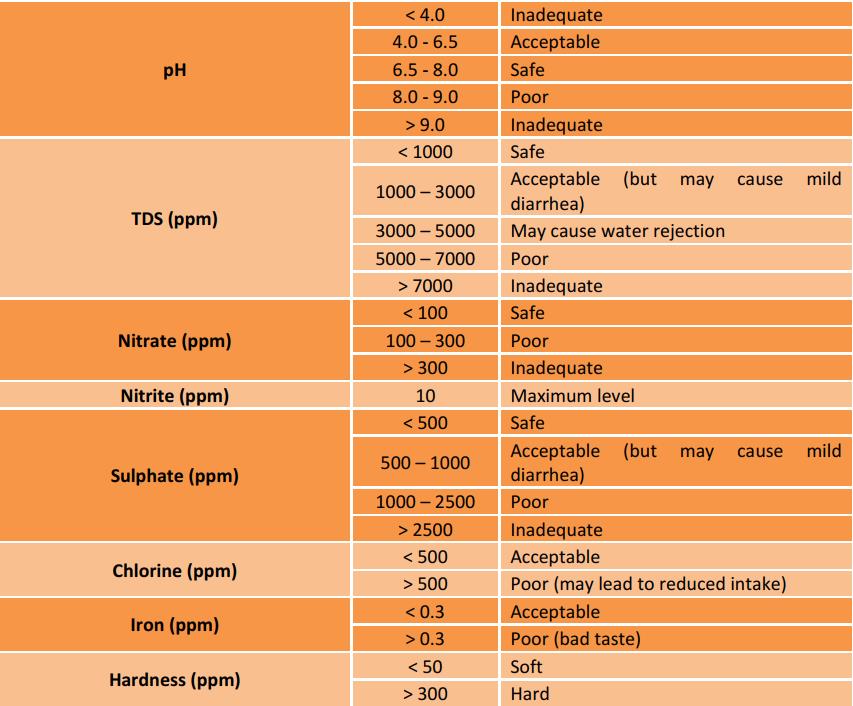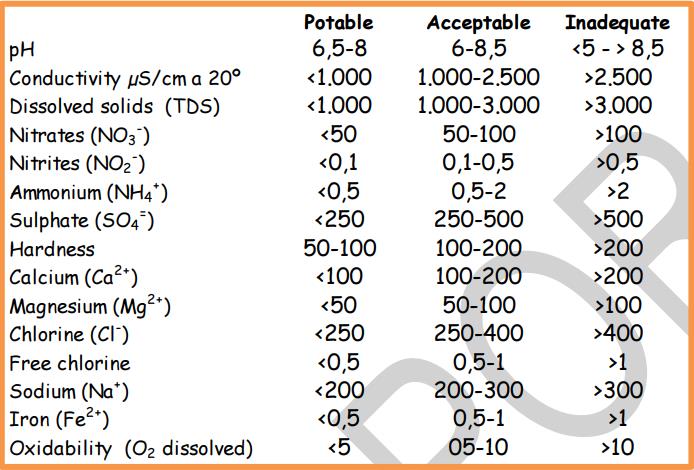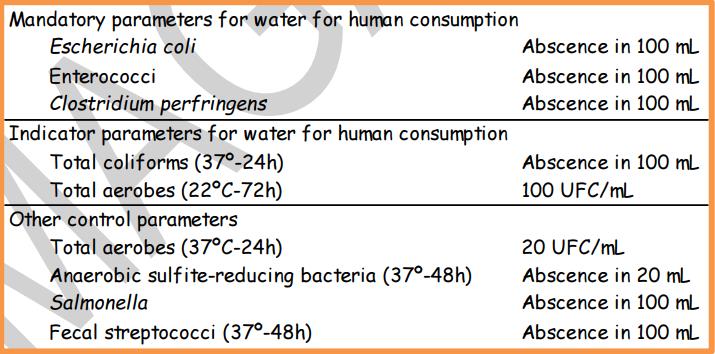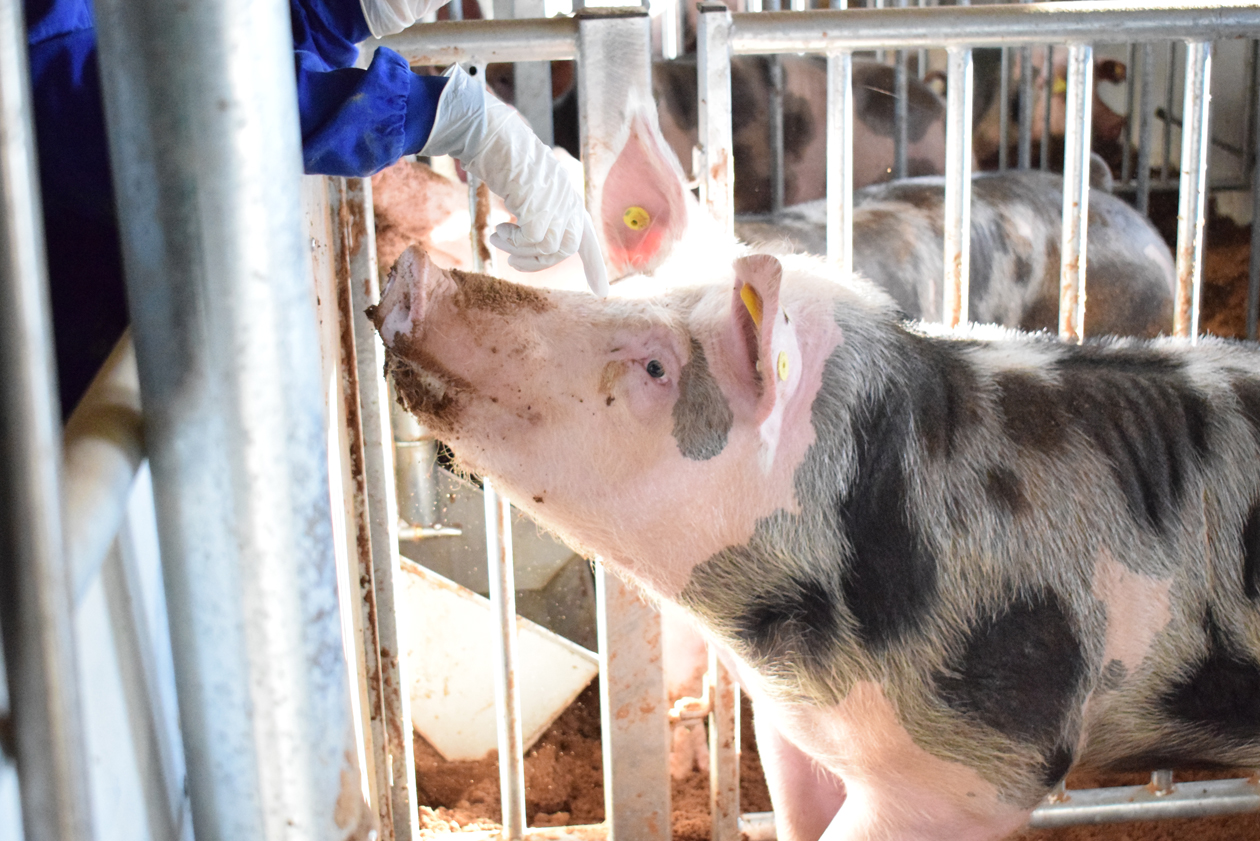There are other recommendations published by other authors for physico-chemical and microbiological parameters specific to animal production.
Physical and chemical recommendations:

Microbiological recommendations:

Other recommendations given by FEDNA include the following:

FEDNA recommendations for microbiology:

*** Explanation of the parameters to analyse
TDS (total disolved solids)
It determines the salinity of the water. It generally includes minerals and salts of calcium, magnesium, sodium, bicarbonate, chlorine, sulfates, iron, manganese and others.
Water hardness
This parameter mainly refers to the amount of dissolved Ca++ and Mg++ salts. It does not usually present a problem for the animal production and health. However, its control is important since the precipitation of these salts can damage the system of purification and distribution of water, being the main cause of obstruction of the drinkers. Therefore, hardness can become a real problem for exploitation if it hinders the distribution of drinking water.
A water is considered soft if it has 15 to 50 ppm (1 ° F = 10ppm), while it is classified as hard if it has more than 180-200 ppm.
Estas sales de calcio y magnesio pueden interaccionar también con determinados tratamientos por el agua (inactivación de tetraciclinas por el Ca, Mg y Fe), también convendría valorar la formación de depósitos en orina y articulaciones.
These calcium and magnesium salts can also interact with certain treatments by water (inactivation of tetracyclines by Ca, Mg and Fe), it is also advisable to assess the formation of deposits in urine and joints.
Acidity and alkalinity of water
Normally the pH of water in livestock farms usually ranges between 6.5 and 8.5. The pH of the water rarely causes problems for the animals. Although it is interesting to know that high pH weaken the effect of chlorination and that low pH can be the cause of precipitation of certain drugs administered in water (sulfamides). Likewise, extreme pH values alter the water distribution system (pipes, drinking troughs, valves, etc.).
Nitrates and nitrites
Pigs tolerate high levels of nitrates quite well. Nitrates (NO3) are produced in the final stage of the decomposition of organic matter. Their presence in the water is indicative of contamination, either by human or animal waste, or by run-off water with the presence of fertilisers. In contrast, nitrites (NO2) are produced in the intermediate stages of the decomposition of organic compounds.
Sulphates
It is possibly one of the main causes of poor water quality in animal farms. Sulphates are not well tolerated causing diarrhea (especially piglets) and delayed growth. However, animals usually adapt within a few weeks to moderately high levels.
Iron
Iron in groundwater is soluble. When the water rises to the surface and comes into contact with oxygen, the iron precipitates, being able to block the water conduction system or the drinking troughs themselves. Special iron filters can be fitted to avoid this problem.
Organic matter
High levels can protect microorganisms from the action of disinfectants and promote their development.




